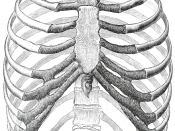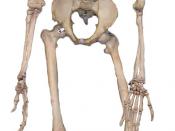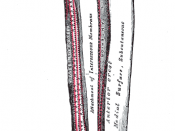LESSON -4 Page 1-6
The Human Body
The human body is composed of different levels of organization and it is a remarkable
system that represents a series of steps. It is important to know and understand how the
structure of body parts relate and function together.
To perform an accurate assessment of the human body is to communicate the proper
medical terms and to do this, you must be able to identify the topographic anatomy,
which means to know and be able to identify the superficial landmarks and locate it's
internal structures. Learning and understanding will make it easier to correctly complete
and report the assessment findings to all medical providers.
To be able to assess a patient, he or she must be in the anatomic position in which the
patient stands facing toward you, arms at sides with palms of hands forward. To help
identify the location of internal structures and understand how they work with each other
and among the organs, the anatomic planes of the body, which are the imaginary
straight lines that divide the body is a good way to begin.
Anterior refers to the front of the patient, with the side facing you in the anatomic
position and as the posterior refers to the back surface or the side of the patient away
from you. There is the midline which is a vertical line (imaginary line), which starts from
Page 1
the middle of the forehead through the nose, down to the navel, to the floor, this line
divides the body into two halves that are identical to each other. Examples of midline
structures are the nose, chin, umbilicus and spine. Another vertically drawn line is the
midclavicular line, which is drawn through the middle portion of the clavicle & parallel
to the midline, Examples...


